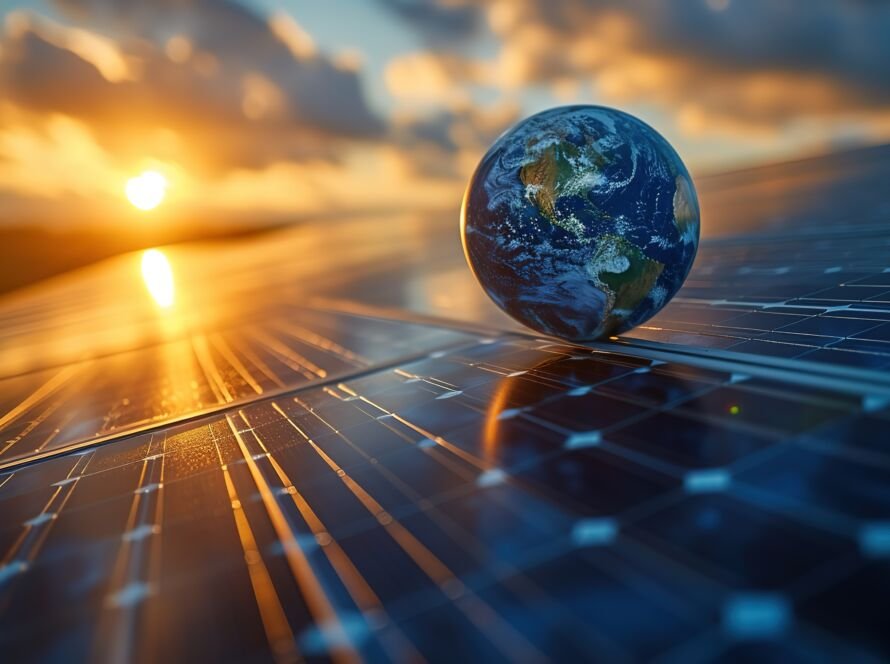Solar cells have become a symbol of sustainable energy, promising to power our world with minimal environmental impact. Yet, beneath their clean facade lies a complex reality. Manufacturing these energy-harvesting marvels involves energy consumption and resource extraction that can be surprisingly intensive. So, how do these environmental costs stack up against the substantial benefits of reduced carbon emissions over their lifespan?
The Costs of Solar Cell Production
The production of solar cells, also known as photovoltaic (PV) panels, involves several stages, each with its own environmental footprint. The process begins with the extraction of raw materials, such as silicon, which is the primary component of most solar cells. High-purity silicon, necessary for efficient solar cells, requires significant energy to produce. This is usually achieved through a process known as the Siemens process, which involves heating silicon in the presence of hydrogen chloride gas to create trichlorosilane, which is then purified through distillation.1
Once purified, the silicon is melted and crystallized into ingots, which are then sliced into wafers. This slicing process, while crucial, results in material waste. The wafers are then treated with chemicals to create the photovoltaic effect—where sunlight is converted into electricity. Each of these steps demands substantial energy, often derived from fossil fuels, contributing to greenhouse gas emissions.
Additionally, the production of solar panels involves the use of various chemicals, including cadmium and tellurium, particularly in thin-film technologies. The extraction and processing of these materials can be environmentally taxing and hazardous if not managed properly.
Energy Payback Time
Despite these production costs, solar panels offer significant benefits over their lifetimes. One crucial metric for evaluating their environmental impact is the energy payback time (EPBT). EPBT refers to the time it takes for a solar panel to generate the amount of energy that was used in its production.
For most conventional silicon-based solar panels, the EPBT ranges from 1 to 4 years.2 This relatively short period means that once installed, the panels quickly begin to produce more energy than was used to manufacture them. Over a typical 25 to 30-year lifespan, solar panels thus provide a substantial net gain in clean energy. This indicates that, even when considering the energy-intensive manufacturing process, the clean energy produced vastly outweighs the initial carbon footprint. Additionally, advancements in manufacturing technologies and the increasing use of renewable energy in production are gradually reducing the EPBT further.
Comparing Emissions
To fully grasp the environmental benefits of solar panels, it’s important to consider their entire lifecycle—from production to end-of-life. The carbon footprint of a solar panel is predominantly front-loaded during manufacturing. However, once installed, the panels produce electricity without emitting greenhouse gases.
A lifecycle assessment (LCA) of solar panels typically reveals that the total emissions associated with their production, installation, and disposal are significantly lower than those of fossil fuel-based energy sources. For example, coal-fired power plants emit roughly 900 grams of CO2 per kilowatt-hour (gCO2/kWh) of electricity generated, while solar panels produce around 40-60 gCO2/kWh over their lifetime.3 This dramatic reduction in emissions underscores the long-term benefits of solar energy.
Moreover, as the electricity grid becomes greener with more renewable energy sources, the relative emissions from solar panel production continue to diminish. Thus, the environmental benefits of solar panels only become more pronounced as the grid decarbonizes.
The Role of Recycling and Disposal
As solar panels age and reach the end of their useful life, recycling and disposal become critical issues. Currently, recycling rates for solar panels are relatively low, with many panels ending up in landfills. However, efforts are underway to improve recycling technologies and increase the recovery of valuable materials such as silicon and rare metals.
Recycling not only reduces the environmental impact of disposal but also helps in recovering and reusing materials, thus lessening the need for new resource extraction. Enhanced recycling processes could further reduce the overall lifecycle emissions of solar panels, making them even more environmentally friendly.
The Bigger Picture
When comparing the environmental costs of solar cell manufacturing to their benefits, it’s crucial to consider the broader context. Solar energy contributes to energy diversification, reduces reliance on fossil fuels, and decreases air pollution. These systemic benefits, including public health improvements and energy security, enhance the overall value of solar power.
Furthermore, the rapid advancements in solar technology, from more efficient cells to innovative recycling methods, continue to reduce the environmental footprint of solar energy. The transition to a more sustainable energy system involves weighing these costs against the enormous benefits of reduced greenhouse gas emissions and a cleaner, more resilient energy infrastructure.
A Sustainable Path Forward
In summary, while the production of solar cells involves significant energy use and resource extraction, these environmental impacts are more than offset by the clean energy they generate. With an energy payback time of just a few years and a long-term reduction in carbon emissions, solar panels offer a compelling solution to the climate crisis. As technology advances and recycling practices improve, the environmental footprint of solar cells will continue to shrink, making this renewable energy source even more valuable.
References
- Ceccaroli, B.; Lohne, O. Solar grade silicon feedstock. Handbook of Photovoltaic Science and Engineering. 2nd ed. Chichester: Wiley 2011, 169-217.
- PV FAQs: What Is the Energy Payback for PV? National Renewable Energy Laboratory, 2004. Available at https://www.nrel.gov/docs/fy04osti/35489.pdf
- Assessment, L. C. Life cycle greenhouse gas emissions from electricity generation: update. Life 2021, 800 (1).

